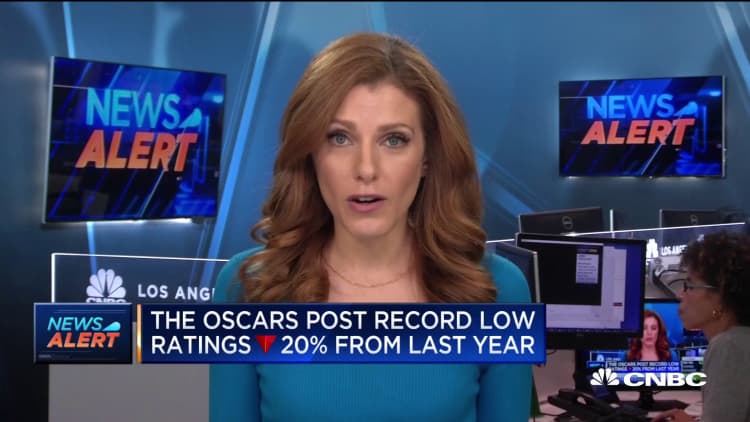The Academy Awards may be the biggest night in Hollywood, but fewer and fewer people are tuning into the big event.
Last Sunday, viewership for the annual Oscars telecast plunged to a new low, with only 23.6 million people watching to find out which film took home the best picture prize, according to Nielsen data. It was a 20% drop from 2019's ceremony. Those numbers do not include viewers who watched the broadcast on a streaming platform.
The Academy Awards weren't the only awards program to see ratings slip. The Emmys and the Grammys both saw declines in viewership in the last year. The Emmys' ratings fell 32% to 6.9 million viewers and the Grammys' ratings slipped a more modest 5% to 18.7 million views.
So, are people becoming bored with big award ceremonies or are they just watching them differently?
Some argue that the inundation of too many live award show ceremonies has saturated the market and made top-tier award shows like the Grammys, Emmys and Oscars less exciting to viewers.
The Golden Globes, the Video Music Awards (VMAs), Billboard Music Awards, Country Music Awards, BET Awards, People Choice Awards, Critics Choice awards, and countless other ceremonies have all been televised in recent years. With such little curation, it wouldn't be surprising if viewers started to feel fatigued.
Not to mention, younger viewers, many of whom have cut cable, aren't as willing to sit through the traditional 16 to 20 minutes of commercials per hour that comes with a live TV telecast. A three-hour show like the Oscars can mean an hour worth of ads.
Then there are the nominees themselves. Nielsen's data shows that in the years where certain, more commercially popular, movies were nominated, more people tuned in.
2019's ceremony, which hit 29.6 million viewers, featured nominees from popular films like "Black Panther," "Spider-Man: Into the Spider-Verse," "Bohemian Rhapsody" and "A Star is Born."
Similarly, even a decade ago, when "Avatar," "Up," "Inglorious Basterds," "District 9," "The Hurt Locker" and "The Blind Side" were all nominated for best picture, ratings hit 41.6 million.
Of course, there's the possibility that people are watching the Oscars, Emmys and Grammys, but are watching the programs differently. The Nielsen data doesn't include figures for viewers who opted to watch any of the major award shows on streaming platforms.
The VMAs, for example, saw linear TV views slump to 4.9 million in 2019, down 6% from the year before. However, the broadcast thrived on social media. MTV, which hosts the show, said its social and online video views were up 85% year-to-year.
Disney's ABC, which housed the Oscars telecast this year, reported that social media activity for the show was up 16% from the last year across Twitter, Facebook and Instagram.



